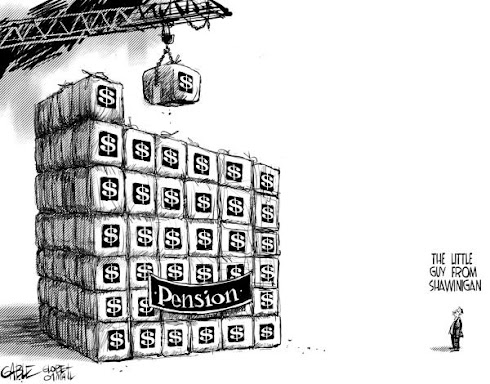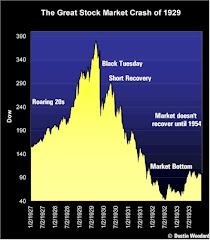
Forbes came out with an article last week about the lucky stiff retiring on a public sector pension. The article tells the story of the stiff retiring four years ago at age 42 with a $65,000 per year pension. The pension is indexed for life, that is guaranteed to increase every year. Forbes places the value of that pension at $2,000,000 and most of that will be funded by taxpayers today and into the future.
In the article Forbes notes that America is "creating a nasty social problem as well. America, in case you hadn't noticed, is dividing into two nations. The 22.5-million-strong public sector (that includes retirees) is growing ever larger, and enjoying ever greater wages and benefits often guaranteed by state constitutions." This nasty little problem is not only occurring the the United States but in Canada and most countries around the world.
I have followed the pension world for the past ten years with a focus on the large gap between public sector plans and those of the average Canadian worker. In the UK (England) they have coined the phrase Pension Apartheid for the two nations that are developing.
The compensation levels of the public sector have been designed to compensate public sector workers based on a need to avoid political confrontation. They have powerful unions and whenever there is an upcoming election they make their voices heard.
Originally the union propaganda was that the public sector was underpaid relative to the private sector. However, Forbes points out:
"In public-sector America things just get better and better. The common presumption is that public servants forgo high wages in exchange for safe jobs and benefits. The reality is they get all three. State and local government workers get paid an average of $25.30 an hour, which is 33% higher than the private sector's $19, according to Bureau of Labor Statistics data. Throw in pensions and other benefits and the gap widens to 42%."
This same analysis holds true in Canada and recently was reinforced by the Wage Watch report released by the CFIB - Canadian Federation of Independent Business.
The real bonus to public sector employment is the pension plan. The pension plan is not based on an accumulation of funds like your plan is, it is based on a continued stream of income into retirement. This stream of income is based on 70% of the wage rates at termination of employment. In the Forbes example, the worker had a pension worth about 72% of his final salary. His ending salary was $90,000 per year and he will receive a $65,000 pension indexed for life.
These type of pensions do not exist in the private sector, except for a few companies, most of which were once public sector and are now "Crown Corporations".
Forbes notes that "four in five public-sector workers have lifetime pensions, versus only one in five in the private sector. The difference shifts huge risks from government to private-sector workers." In Canada those numbers are about the same.
Check out the Forbes article it certainly will create much needed debate around this issue over the next few weeks. Gilt-Edged Pensions



No comments:
Post a Comment